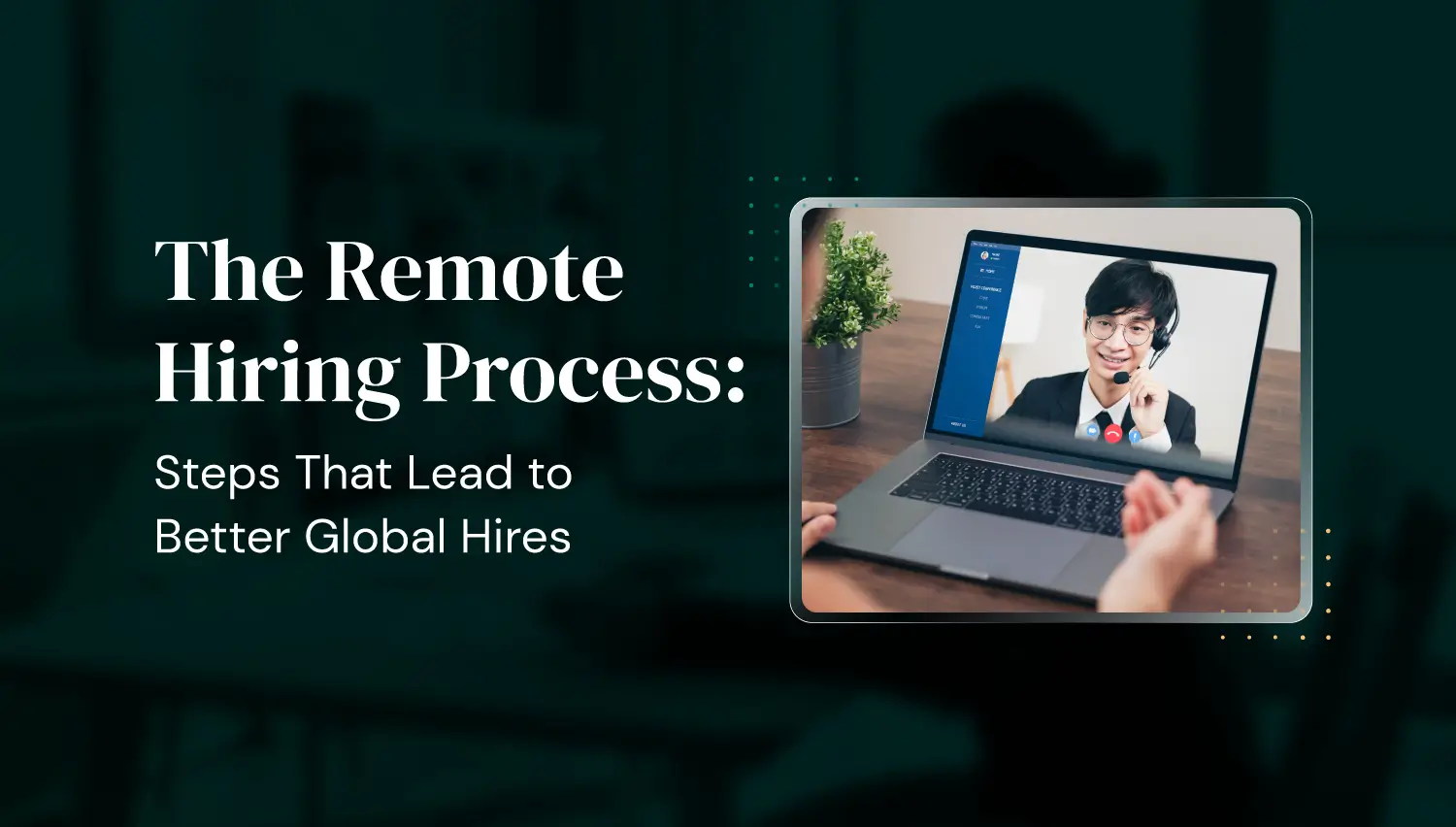Several years ago I was advising a fintech startup on hiring. They'd just closed a Series A funding round, and the CEO called me in a bit of a panic. They needed to launch new payment integrations within six months to satisfy investor milestones, but their in-house team didn't have the bandwidth (or some of the niche compliance expertise) to pull it off.
Rather than spend months recruiting full-time hires, we assembled a contingent team: four senior engineers from Poland specializing in payment gateways, a regulatory consultant out of New York, and a technical project manager in Toronto. It wasn't just cheaper; it was fast, flexible, and let the core team stay focused on their product roadmap. They hit their deadlines and avoided expensive compliance missteps that could have sunk the deal.
That project was a turning point for me in how I think about contingent staffing. It's not just a short-term patch. Done right, it's a strategic tool for companies that need to move quickly, stay lean, or access skills they can't find (or afford) in their local market.
In this article, I'll break down what contingent staffing really means, why it's surged in popularity, and how to use it effectively without running into legal headaches or quality issues.
What Is Contingent Staffing?
At its core, contingent staffing means bringing in talent on a non-permanent basis to meet specific business needs. This can include contractors, freelancers, consultants, temp workers, or gig specialists. Unlike permanent employees, contingent workers are typically engaged for defined projects, seasonal surges, or skill gaps that don't justify a full-time hire.
For many companies, contingent staffing has evolved from a tactical choice to a strategic workforce model. It offers flexibility, rapid access to specialized skills, and the ability to manage costs without sacrificing speed or quality. In my experience, organizations that understand how and when to deploy contingent talent can outpace competitors who rely exclusively on traditional hiring.
But while the benefits are real, so are the complexities. Misclassification risks, compliance issues, and challenges integrating contingent workers into existing teams can quickly erode the advantages if handled poorly.
That's why it's critical to approach contingent staffing as a deliberate part of workforce strategy rather than an afterthought.

Why Businesses Are Turning to Contingent Staffing
When I first started advising companies on workforce strategy, contingent staffing was mostly a stopgap, an emergency lever for budget crunches or hiring freezes. But over the past decade, it's become a core part of many companies' strategic workforce planning.
It's not that business has suddenly become volatile; volatility has always existed. Product timelines, regulatory shifts, and technical disruptions have been constants in industries like tech, finance, and healthcare. What's different now is how companies (and workers) approach work itself.
The global talent pool has opened dramatically thanks to collaboration tools, remote work norms, and shifting cultural expectations around employment. Workers with highly specialized skills increasingly prefer project-based engagements over traditional employment. Companies, in turn, see contingent staffing as a way to gain fast access to expertise, stay lean, and reduce long-term commitments without sacrificing quality.
I've seen this firsthand with SaaS firms hiring privacy consultants ahead of new legislation, fintech startups racing to integrate new payment rails under tight investor deadlines, and enterprises launching products in new markets without building permanent local teams. For these organizations, contingent staffing isn't just about saving costs; it's about matching talent to business priorities with speed and precision.
Of course, that flexibility comes with its own challenges. Compliance risks, onboarding gaps, and the potential for knowledge loss are real if contingent staffing isn't managed as part of a broader workforce strategy.
That's why companies today are integrating contingent talent deliberately rather than treating it as an afterthought.
Strategic Scenarios for Leveraging Contingent Talent
There's no single blueprint for when to use contingent staffing; it's about identifying moments where flexibility and specialized expertise offer a genuine advantage. Over the years, I've seen several scenarios where contingent talent delivers the highest value:
Project-Based Needs
Some initiatives demand skills your team simply doesn't have in-house and doesn't need long-term. Whether it's integrating a new tech stack, navigating a complex regulatory filing, or producing specialized creative assets, contingent professionals can provide focused expertise for the duration of the project without inflating permanent headcount.
Seasonal or Cyclical Demand
Retailers, logistics providers, and event-based businesses frequently rely on contingent workers to handle spikes in workload. But even in less obvious industries, like SaaS companies ramping up customer support for a major release, contingent staffing can help manage workload volatility without committing to year-round salaries.
Business Expansion or Transformation
Entering new markets or rolling out new service lines often demands localized knowledge or specialized skills. Rather than hiring permanent teams in regions where long-term success isn't yet certain, companies can engage contingent talent to test the waters, establish initial operations, or conduct market research.
Rapid Market Entry or Competitive Response
Speed can be the difference between capturing a market or losing ground to competitors. Contingent staffing allows organizations to deploy skilled resources quickly, shortening timelines and avoiding the lag associated with recruiting permanent staff.
Best Practices for Managing a Contingent Workforce
Hiring contingent talent can unlock real advantages, but only if managed with the same rigor as permanent teams. Overseeing a workforce that sits outside traditional structures demands clear processes, proactive communication, and a sharp eye on compliance. Here's what I advise clients to focus on:
Define Roles and Expectations Clearly
Ambiguity is the enemy of successful contingent engagements. Job scopes, deliverables, timelines, and reporting lines should be documented in writing before work begins. This reduces misunderstandings and helps ensure contingent talent can hit the ground running.
Streamline Onboarding
Even though contingent workers may only stay a few weeks or months, they still need to understand the tools, workflows, and security protocols they'll be using. Efficient onboarding shortens ramp-up time and prevents errors that stem from unfamiliarity.
Maintain Strong Communication Channels
It's easy for contingent staff to feel disconnected from the broader team, especially if they're remote. Regular check-ins, inclusion in key meetings (when appropriate), and access to shared communication tools help bridge that gap and keep projects on track.
Monitor Performance and Provide Feedback
Don't assume that because a worker is contingent, performance management doesn't apply. Set clear milestones, track progress, and provide feedback. This protects project quality and gives you valuable data on which partners or freelancers to engage again in the future.
Stay on Top of Legal and Compliance Issues
Misclassification is one of the biggest risks in contingent staffing. The line between contractor and employee can be blurry, and the consequences of getting it wrong can be costly. Partnering with legal advisors or experienced staffing partners can help ensure your engagements comply with labor laws, tax regulations, and industry-specific rules.
Mitigating Risks Associated with Contingent Staffing
While contingent staffing offers strategic advantages, it's not without pitfalls. In my experience, companies that treat contingent engagements as an extension of their broader workforce strategy (and not just transactional relationships) are the ones that avoid costly missteps. Here are some key risks and how to mitigate them:
Compliance and Worker Classification
Misclassifying workers as independent contractors when they legally qualify as employees can trigger significant penalties, back taxes, and legal disputes. Each jurisdiction has its own tests for determining worker status. When in doubt, consult legal counsel or work with a staffing partner familiar with local regulations to avoid compliance landmines.
Data Security and IP Protection
Contingent workers often need access to sensitive systems, proprietary data, or customer information. Without clear policies and secure access controls, this can expose the organization to data breaches or intellectual property theft. Always issue NDAs, limit access to only the systems required for the role, and remove credentials promptly once a project concludes.
Quality and Knowledge Retention
Contingent talent can produce excellent work, but the handoff is critical. Document processes, outcomes, and learnings so that institutional knowledge isn't lost when a contractor departs. Maintaining continuity ensures that projects don't stall when contingent workers roll off.
Vendor Management Complexity
As organizations scale up contingent engagements, they often end up juggling multiple agencies, freelance platforms, and individual contractors. Without centralized oversight, costs can spiral, quality can vary widely, and compliance gaps can emerge. Implement vendor management processes or partner with an agency that can consolidate these functions to maintain visibility and control.

Integrating Contingent Staffing Into Long-Term Workforce Strategy
Contingent staffing isn't just a tactical fix. It's increasingly woven into how companies plan for growth, resilience, and innovation. Organizations that treat contingent talent as part of their broader workforce ecosystem are far better positioned to capture the model's full benefits. Here's how to make it a strategic asset:
Align Contingent Talent with Business Goals
Too often, contingent hiring happens in silos, driven by urgent needs rather than deliberate planning. It's best to map contingent roles to strategic objectives, whether it's accelerating product launches, expanding into new markets, or handling regulatory changes. When contingent talent is tied directly to business goals, it's easier to measure ROI and justify continued investment.
Invest in Technology and Data Visibility
Managing a blended workforce requires tools that provide visibility into who's working where, for how long, and at what cost. Workforce management systems, VMS platforms, and collaboration tools help organizations avoid duplicate efforts, control expenses, and ensure compliance across different engagement types.
Foster Cultural Integration
One of the biggest challenges with contingent talent is ensuring they feel connected enough to deliver high-quality work, but not so integrated that it creates co-employment risks. Companies should create processes for involving contingent workers in relevant communications and collaboration while still maintaining appropriate legal boundaries. Thoughtful onboarding, clear communication norms, and shared tools can help bridge this divide.
Develop Knowledge Transfer Protocols
Before contingent workers roll off a project, capture their expertise. Whether it's documentation, process maps, or recorded training sessions, knowledge transfer protects the organization from gaps and ensures continuity for future teams.
Final Thoughts: Partnering for Smarter Contingent Staffing
Contingent staffing has moved far beyond emergency stopgaps. It's now a deliberate strategy for accessing specialized skills, staying agile, and managing costs without sacrificing quality. But like any strategic tool, it only delivers value when executed thoughtfully.
At Somewhere, we've helped startups and global enterprises alike integrate contingent talent into their workforce plans in ways that balance speed, compliance, and business outcomes. Whether you're exploring contingent staffing for the first time or looking to refine your existing approach, the right partner can make all the difference in avoiding pitfalls and unlocking the true potential of flexible talent models.
If you're considering contingent staffing as part of your workforce strategy, I'd encourage you to reach out through the contact form below. Let's talk about how we can help you build a talent approach that fits your business goals and sets you up for long-term success.














